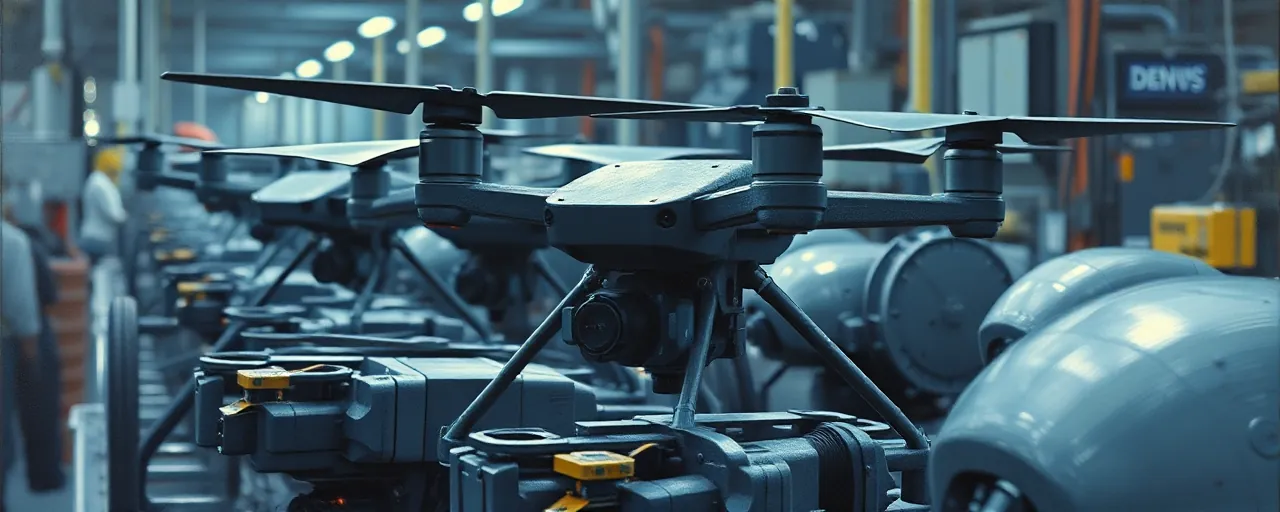A New Push Against Iran’s Drone Network
The United States has fired a fresh salvo in its ongoing battle to curb Iran’s military reach. On April 1, 2025, the U.S. Department of the Treasury’s Office of Foreign Assets Control (OFAC) rolled out sanctions against six entities and two individuals tied to a sprawling procurement network. Spanning Iran, the United Arab Emirates (UAE), and China, this web has been funneling critical components to Iran’s unmanned aerial vehicle (UAV) program, a cornerstone of its military-industrial complex. The targets include Qods Aviation Industries (QAI), a major player in Iran’s drone manufacturing, and its international partners accused of dodging restrictions to keep the production lines humming.
This move isn’t just a slap on the wrist; it’s part of a broader strategy kicking into high gear. In February 2025, the White House issued a directive amplifying pressure on Iran, signaling a no-nonsense approach to its weapons proliferation. With drones from Tehran popping up in conflicts from Ukraine to the Middle East, the stakes are tangible: civilian lives, regional stability, and the security of U.S. allies hang in the balance. The Treasury’s latest action aims to choke off the flow of parts like servomotors, the tiny but mighty engines powering Iran’s combat UAVs.
Who’s Caught in the Crosshairs?
At the heart of this network sits Rah Roshd International Trade Exchanges Development, an Iranian firm accused of securing motors and electronics for QAI’s Mohajer-6 drones, as well as parts for other military heavyweights like the Iran Aircraft Manufacturing Industrial Company (HESA) and Shahid Bakeri Industrial Group (SBIG). Leading the charge is Hossein Akbari, Rah Roshd’s managing director, now facing both sanctions and criminal charges from the U.S. Justice Department alongside colleague Reza Amidi. The duo allegedly conspired to slip U.S. technology into Iran’s hands, a scheme that’s landed them on the wanted list, though they remain at large.
The net widens beyond Iran’s borders. In the UAE, companies like Infracom Communication Networks FZE and financial middlemen such as Diamond Castle Electronics Trading LLC have been tagged for smoothing the path between Rah Roshd and global suppliers. Meanwhile, China’s Zibo Shenbo Machinelectronics Co Ltd enters the frame, accused of shipping tens of thousands of motors to Iran, some destined for SBIG’s ballistic missile efforts. These designations under Executive Order 13382 freeze their U.S. assets and bar American dealings, a move with teeth meant to disrupt the supply chain at its roots.
The Ripple Effects of Sanctions
Sanctions like these pack a punch, but their impact isn’t black-and-white. On one hand, they’ve snarled Iran’s access to high-tech gear, forcing firms like QAI to scramble through back channels for parts. Historical efforts under Executive Order 13382, in place since 2005, have hobbled networks feeding Iran’s weapons programs by locking down funds and isolating key players from global markets. Yet, Iran keeps adapting, leaning on intermediaries in places like the UAE and China to skirt the rules. Experts note that while production slows, it hasn’t stopped; drones still roll out, finding their way to Russia or proxy groups in Yemen and Lebanon.
The human cost adds another layer. Iranian UAVs, including the Shahed-136, have hammered civilian targets in Ukraine, leveling infrastructure and stoking fears of broader escalation. Advocates for tighter controls argue that disrupting these supply lines saves lives by weakening Iran’s ability to arm conflicts. Others, including voices from affected regions, point out the flip side: sanctions often hit ordinary people hardest, driving up costs and straining economies already under pressure. The Treasury insists its goal isn’t punishment but behavior change, though that shift remains elusive.
Global Ties and Tangled Lies
The UAE and China’s roles here aren’t new; they’ve long been hubs for trade that sometimes blurs into the illicit. Companies in Dubai or Shenzhen often act as go-betweens, exploiting busy ports and loose oversight to move dual-use goods, items with both civilian and military uses. For Iran, this means motors for drones or missiles can slip through under the guise of legitimate business. Enforcement stumbles when jurisdictions don’t align; the U.S. can blacklist firms, but without local cooperation, the effect dulls. Past crackdowns have exposed similar patterns, yet the trade persists, fueled by economic ties too lucrative to sever.
Legal tangles muddy the waters further. Prosecuting figures like Akbari and Amidi hinges on extradition or catching them abroad, a tall order given Iran’s defiance. Financial facilitators, meanwhile, dodge scrutiny through shell companies, a tactic that’s bedeviled regulators for decades. The Justice Department’s charges signal intent, but success isn’t guaranteed. Observers argue that plugging these gaps demands more than unilateral sanctions; it takes a global playbook, one that’s tough to write when economic interests clash with security goals.
What’s Next for the Drone Crackdown?
This latest round of sanctions marks a stepping stone, not a finish line. The Treasury’s focus on QAI and its partners builds on years of targeting Iran’s military machine, a campaign that’s notched wins like asset freezes but hasn’t fully clipped Tehran’s wings. With UAVs reshaping warfare, from precision strikes to psychological strain on civilians, the urgency feels real. The U.S. is betting that piling on pressure will force Iran to rethink its strategy, though history suggests resilience might trump compliance. For now, the designations send a message: no corner of the supply chain is out of reach.
The bigger picture lingers unresolved. Drones aren’t just Iran’s game; they’re a global challenge, blurring lines between state and non-state power. As technology spreads, so do the headaches of controlling it. The Treasury’s efforts might slow Iran’s roll, but they also spotlight a world where enforcement races to keep up with ingenuity. For people caught in the fallout, whether in Tehran’s streets or Ukraine’s rubble, the question isn’t just about sanctions working, but what happens if they don’t.
